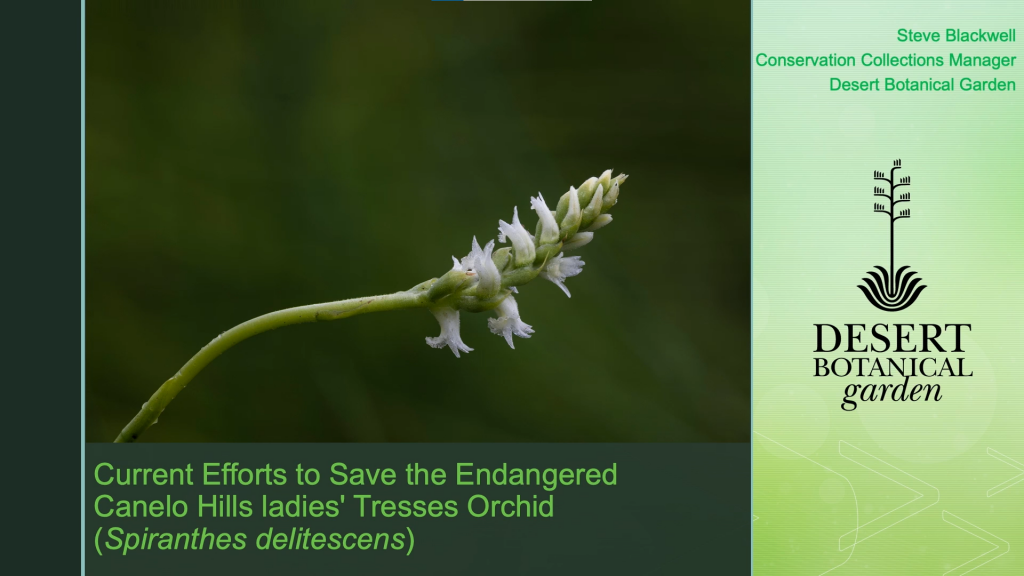
The Canelo Hills ladies’ tresses orchid (Spiranthes delitescens) is currently known to occur in only two remaining locations on private ranchlands in southern Arizona. Since 2016, the DBG has been working with the USFWS, the Smithsonian’s North American Orchid Conservation Center (NAOCC), and private ranchers to conserve this species through propagation and fungal research. Researchers […]
Read More…
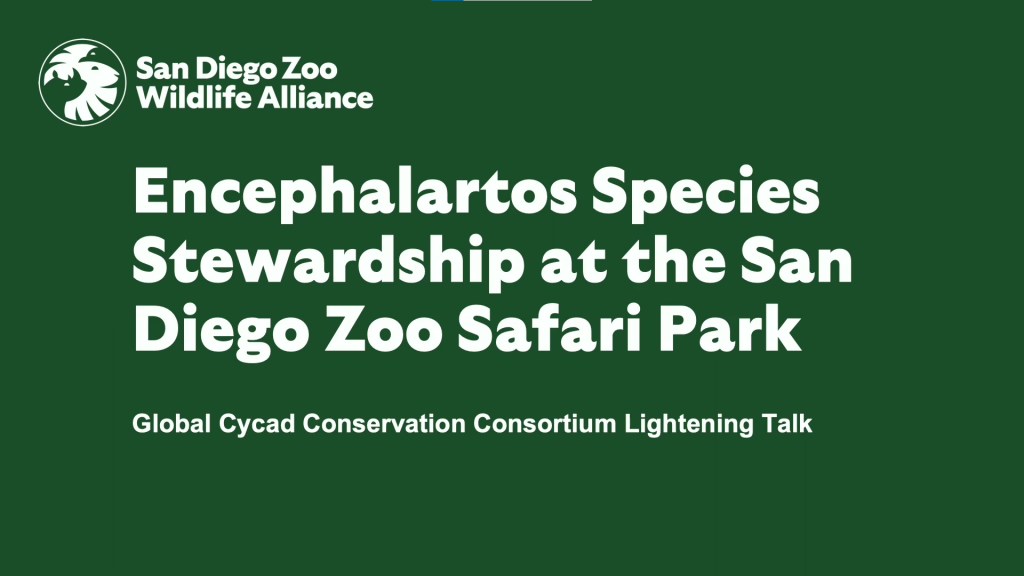
Establishing an Encephalartos Species Stewardship program at the San Diego Zoo Wildlife Alliance has been an exciting and complex process. This presentation explores the design, planning, site selection, procurement and the organizational process steps that we navigated to initiate the program. The lightening talk will cover the development of the Encephalartos Garden along with future […]
Read More…
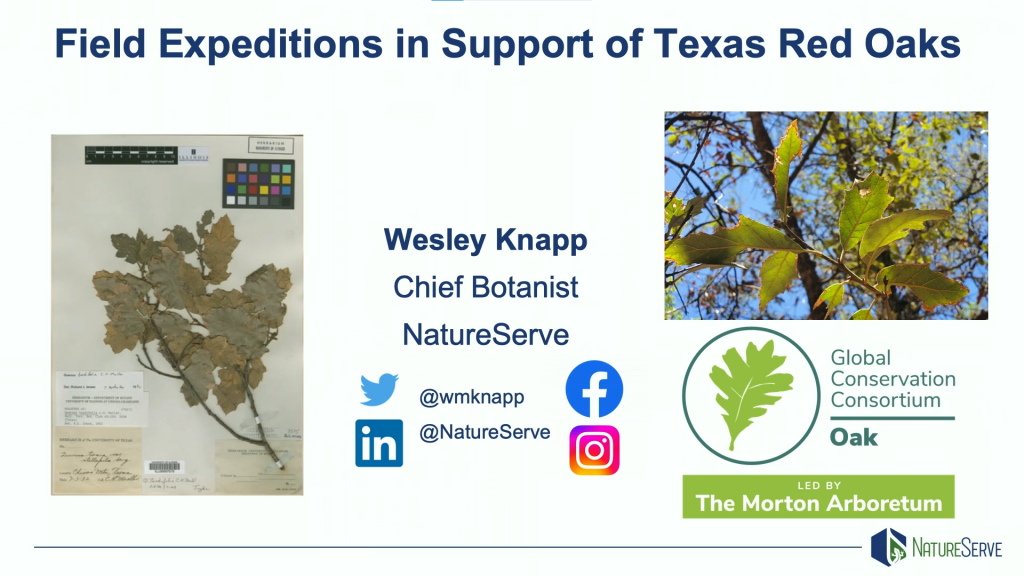
Oak are a diverse and ecologically important group of woody plants found throughout much of North America. One area of high speciation is Texas. Over the past two years the GCCO has assisted with the coordination and prioritization of work to delimit species and conduct priority on-the-ground conservation action for some of the world’s rarest […]
Read More…
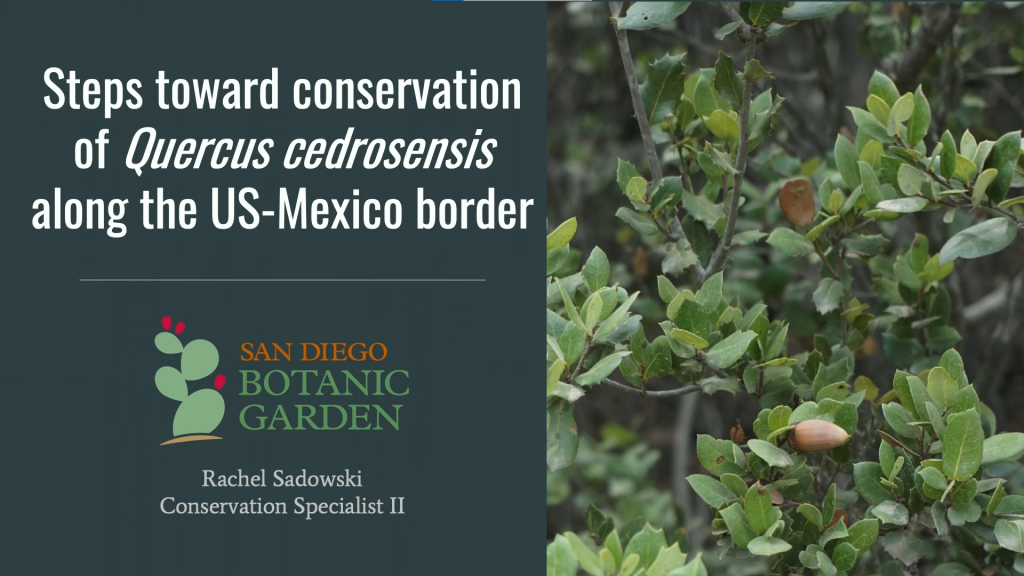
Quercus cedrosensis is a scrub oak found in Baja California, Mexico south to Cedros Island. In the U.S. it is known by only a few small occurrences in San Diego county, CA along the international border. Despite a majority of this U.S. population growing on protected lands, the trees face threats from drought, wildfire, and […]
Read More…

It is known that two in five plants, and one in three trees, are threatened with extinction and thus, botanical gardens around the world play a key role in ex situ preservation of plant genetic resources. The traditional conservation methods, seed and field banks, are not efficient (high cost of maintenance, risk of loss) for […]
Read More…
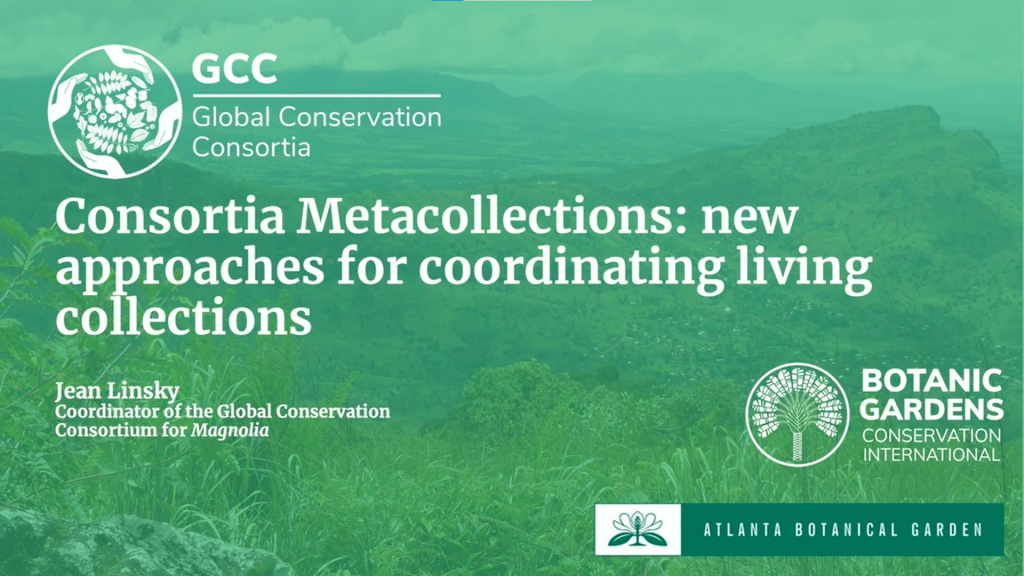
The Global Conservation Consortia (GCC) are a worldwide initiative spearheaded by Botanic Gardens Conservation International (BGCI) with the aim to mobilize coordinated networks of institutions and experts to collaboratively develop and implement comprehensive conservation strategies for priority threatened plant groups including Magnolias, Oaks and Cycads. Amongst other activities, the strategies for these groups may include […]
Read More…
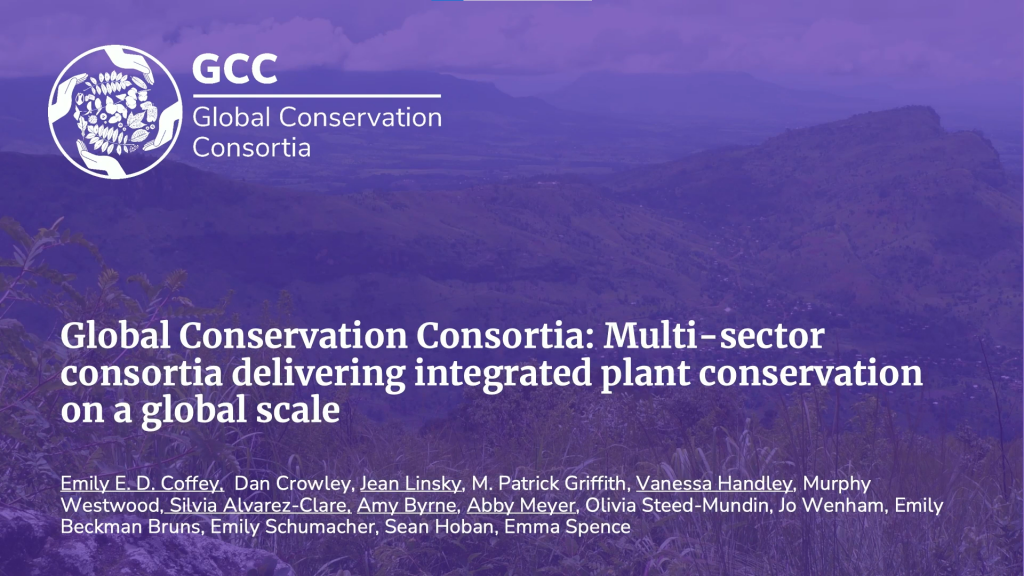
Biodiversity is in crisis, with over a million threatened species and the ongoing decline of species and populations. To accelerate effective conservation of global plant diversity, Botanic Gardens Conservation International (BGCI) and numerous partners have established a suite of Global Conservation Consortia (GCC), which catalyze groups of institutions and experts to collaboratively develop and implement […]
Read More…
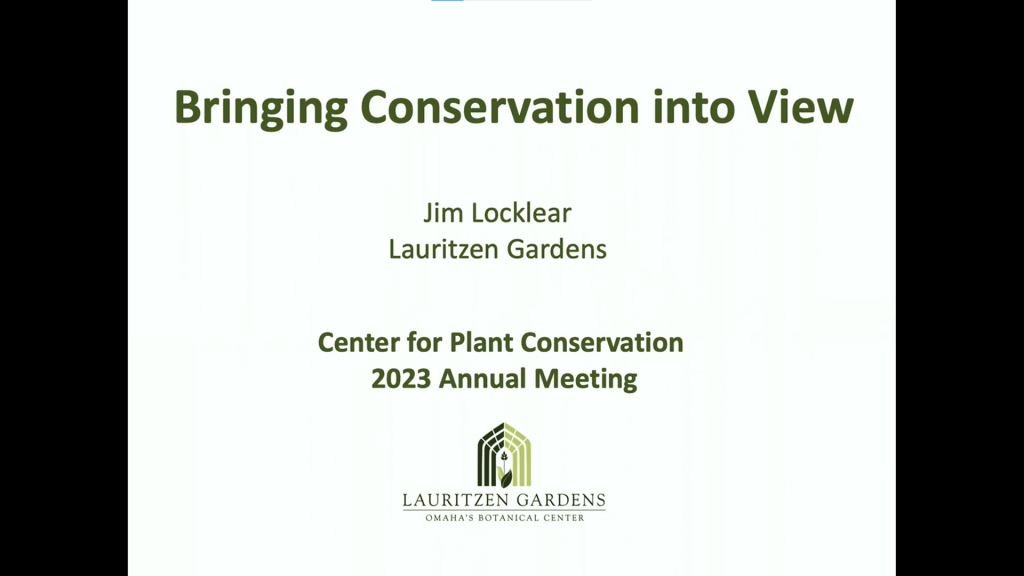
Lauritzen Gardens is creating a new feature in 2023 which we hope will inspire greater appreciation and support for our conservation vision. The walkway that winds through our woodland restoration area ascends to a rise that provides a spectacular view back into the heart of the garden and the Missouri River valley beyond and looks […]
Read More…
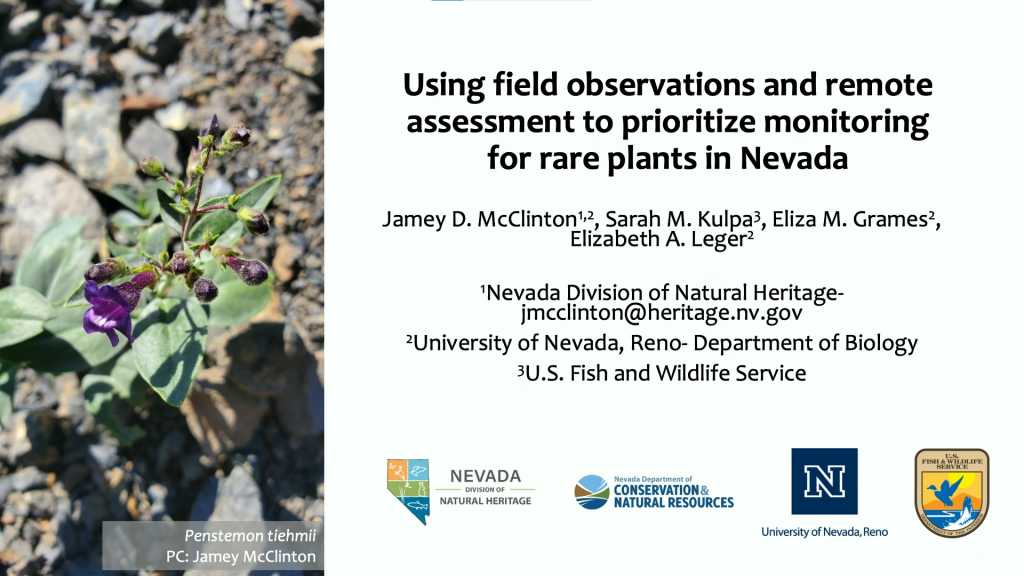
Recent research conducted through a partnership between the Nevada Division of Natural Heritage (NDNH), the University of Nevada, Reno, and the U.S. Fish and Wildlife Service identified the most prevalent threats to rare species in Nevada, explored the correlation between threats predicted by geospatial data and threats observed on the ground, and used this information […]
Read More…

The University of Minnesota Landscape Arboretum is partnering with the Minnesota Department of Natural Resources to create a statewide volunteer corps of certified rare plant specialists. These citizen scientists will help relocate and track historical or unverified rare plant EOs as well as eventually help bank seed in the state rare plant long-term seed bank […]
Read More…
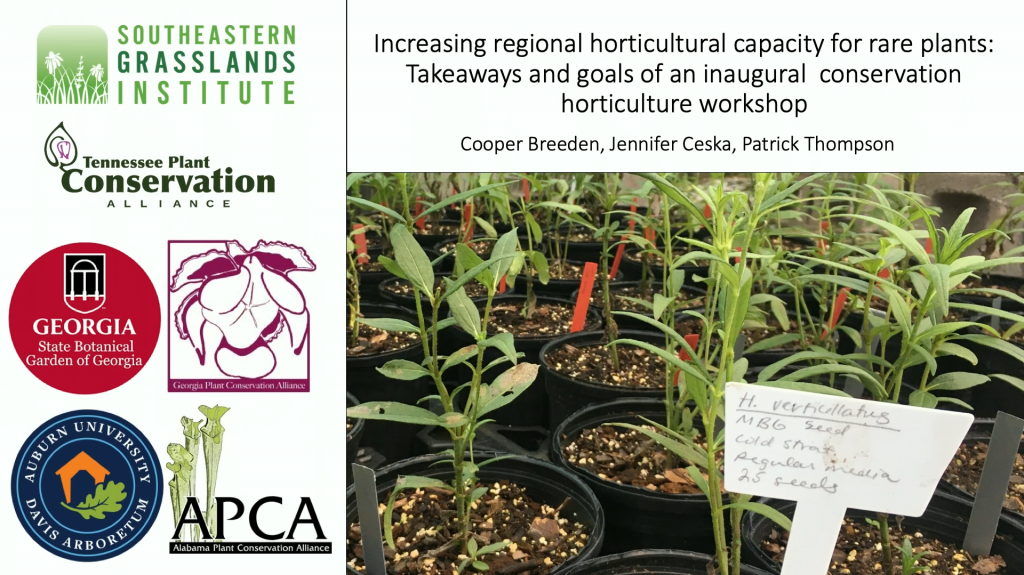
The establishment of ex situ living collections is essential to the recovery of many rare plant populations. While there are horticulturists that work in a variety of industries, many regions lack experts trained in the nuances of maintaining a conservation collection. To begin addressing this gap in expertise, the coordinators from the Alabama, Georgia, and […]
Read More…
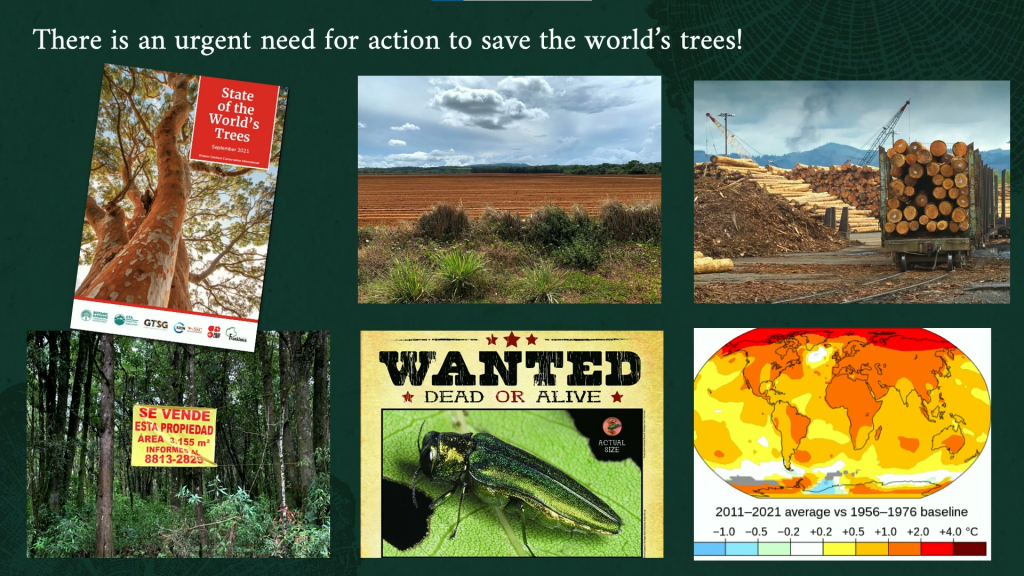
Trees are the scaffolding of forest ecosystems, supporting much of the world’s biodiversity and the livelihoods of millions of people. The State of the World’s Trees Report, the first assessment of Earth’s approximately 60,000 tree species, revealed that more than 17,500 are threatened with extinction. That is more than double the combined number of globally […]
Read More…
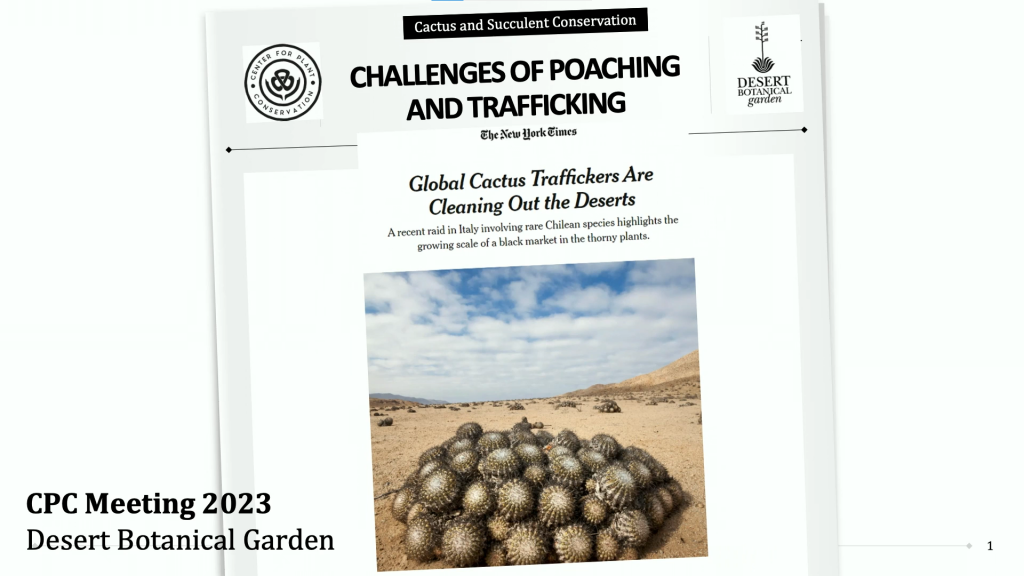
According to the most recent IUCN Red List assessment, three plant groups – cycads (1st), conifers (3rd), and cactus (5th) have the unfortunate distinction of being included in the top seven most threatened taxonomic groups in the world. One major threat affecting cycads and cacti is the illegal collection and trade of these plants. This […]
Read More…

In December 2022, CPC re-launched our CPC Reintroduction Database. This resource represents a harmonization of the CPC International Reintroduction Registry and the more recent REDCap Dataset compiled by Matthew Albrecht and Oyomoare Osazuwa. This database contains over 400 projects involving 187 species across 25 states. Aside from the reinstallation of the new database on the […]
Read More…
With the completion of the Center for Plant Conservation’s (CPC) four-year IMLS National Leadership grant (2018-2022), the CPC Rare Plant Academy (RPA) has been established as a go-to multi-media resource for rare plant conservation education and expertise. In this session, we’ll share insights from this grant work resulting in key improvements to the RPA platform […]
Read More…

US National Arboretum, American Public Gardens Association’s Plant Collections Network, and National Laboratory for Genetic Resource Preservation (NLGRP) are working together to conserve the genetic diversity of Sassafras albidum, a widespread species in the Eastern US, under threat from Laurel Wilt Disease. This vascular disease introduced a decade ago in Georgia can be lethal to […]
Read More…

The Del Mar manzanita (Arctostaphylos glandulosa ssp. crassifolia) is an endangered perennial shrub native to San Diego County, CA, USA. Although their seeds may be banked for years, germination rates are exceedingly low. Scarification, acid exposure, and heat shock require considerable time and effort to achieve improved germination rates. Tissue culture is a viable alternative. […]
Read More…

The Hawaiian Rare Plant Program (HRPP) uses ex-situ conservation technologies to safeguard endangered native Hawaiian plants from extinction. The HRPP is located at Lyon Arboretum, a University of Hawaii research unit, and is comprised of the Micropropagation Lab, Seed Conservation Lab, and Rare Plant Greenhouse. Each component of the HRPP plays a critical role in […]
Read More…
















